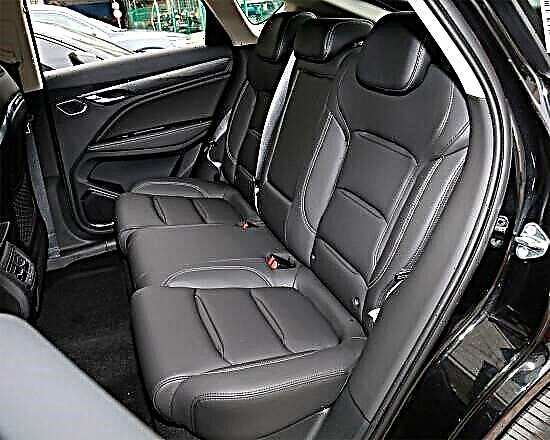Many people dream of their own car, but only a few find the strength, inspiration and desire to work hard and painstakingly on creating their own dream car. It is these desperate self-taught people who make the automotive world more interesting, saving it from the boredom of assembly line production. It is their creations that sometimes attract the attention of others more than the top models of famous manufacturers.
Today we want to introduce you to the best homemade cars from around the world. Our rating includes really worthy homemade products that can be sent to mass production even today without fear of low demand. Most of the cars that hit the rating can easily compete with the cars of major manufacturers, but, unfortunately, they will forever remain in a single copy, delighting the public only at various auto shows. However, this is what makes them special, inimitable, unique, and allows their owners to feel like heroes who managed to single-handedly create a truly worthy car. So let's get started.
There are only five homemade products in our rating. It could have been more, but we decided to limit ourselves only to cars that have passed all the necessary certification and registered, i.e. all participants in the rating are allowed to drive on public roads without any restrictions. This only confirms their quality and uniqueness, and also speaks of a real opportunity to compete with production cars.
The fifth place was given to the off-road vehicle "Black Raven"Built in Kazakhstan. This unique vehicle, created for hunting in the steppe conditions, has a menacing and at the same time futuristic design. “Black Raven” could have boldly starred in science fiction films or even played the role of an army vehicle, but it is used only by its creator - a modest self-taught engineer from Karaganda.

The exterior of the SUV is really original, a little awkward, but distinctive and brutal. "Black Raven" is a real man's car with a powerful frame chassis, riveted aluminum body panels, multi-eyed optics and all-terrain wheels that are ready to bite into even difficult ground. The "Black Raven" is torn into battle due to a powerful American-made V8 engine, working in conjunction with an automatic transmission and a ZIL-157 gearbox located on the rear axle. Excellent driving performance of the SUV is guaranteed by a long wheelbase, wide track, a central arrangement of the engine and gearbox, as well as independent suspension with torsion bars from the armored personnel carrier. All this allows the car to maintain stability during sharp maneuvers even at a speed of about 100 km / h and easily overcome pits and bumps encountered on the way.
The unique home-made salon is designed for two passengers. The equipment of the jeep includes LED brake lights and turn signals, an electric drive of the front windows, an electric drive of the hood and a unique self-retriever with a chain drive, mounted in the bottom. As for the price, the approximate cost of the "Black Crow" is about 1,500,000 rubles.
Go ahead. On the fourth line we have the first Cambodian car in history - “Angkor 333". Oddly enough, it was created not by a state or private car company, but by a simple mechanic Nhin Feloek, who decided that at 52 it was time to get his own car.

Angkor 333 is a very compact two-seater roadster with a very modern interior and quite attractive design, especially for a poor Asian country.
The Cambodian home-made has received a body with streamlined shapes, stylish optics and modern aerodynamic elements. Moreover, the Angkor 333 is a hybrid vehicle equipped with a traction electric motor, a 3-speed automatic transmission and a 45-horsepower petrol unit designed to recharge the battery. Surprisingly, a homemade roadster can accelerate to 120 km / h and cover about 100 km on a single battery charge. In addition, the equipment of the Angkor 333 includes a touchscreen display that acts as a dashboard, and the doors are opened using a special magnetic plastic card. Even most production cars do not have such functions, so the development of a talented mechanic is worthy of respect.
The first Angkor 333 was built in 2003. In 2006, the creator presented the second generation of his brainchild, and in 2010 he saw the light of a modified third-generation car, which to this day is manually assembled in small batches to order in Nkhin Feloek's garage, providing the retired mechanic with a comfortable old age. Unfortunately, nothing is known about the cost of the roadster.
The third place in our rating is occupied by the car, which is most often called "Mega Cruiser Russia". This impressive SUV was created by Vyacheslav Zolotukhin from Krasnokamensk, Trans-Baikal Territory. At the heart of the homemade product is the modified GAZ-66 chassis, supplemented by reworked shock absorbers from KAMAZ, front split hubs and power steering from the Hino truck.

The Mega Cruiser Russia is driven by an atmospheric 7.5-liter Hino h07D diesel engine, which, in the process of revision, received a KAMAZ air cleaning system. The motor is helped by a 6-speed manual transmission and a transfer case from the GAZ-66, in which all bearings were replaced with imported ones. The home-made drive is full, with the ability to block the bridges, in which the main pairs have been replaced, which made it possible to achieve a smooth ride on paved roads.
The body of Mega Cruiser Russia is metal, prefabricated, attached to the frame through 12 shock-absorbing supports. The “living area” is a redesigned cab of the Isuzu Elf truck, to which is also attached a redesigned “rear” of the Noah minivan. The front part of the body consists of modernized fenders from the GAZ-3307, a hood of its own design and a radiator grill, molded from several copies of the Land Cruiser Prado grille. The homemade bumpers are made of metal, of our own design, and the rims are riveted from GAZ-66 wheels, which made it possible to install rubber from the TIGER army jeep.
If you look into the cabin, you will see 6 seats, a lot of free space, a right-hand drive, a rather nice interior and a comfortable driver's seat with excellent visibility in all directions.

Mega Cruiser Russia is equipped with a 150-liter gas tank, a gyroscope, a 6-ton electric winch, an audio system and even a spoiler. According to the author of the homemade product, the SUV is capable of accelerating to 120 km / h, its weight is 3800 kg, and the average fuel consumption is 15 liters on the highway and about 18 liters off-road. Last year, Mega Cruiser Russia was put up for sale by its creator at a price of 3,600,000 rubles.
The second line of our rating of homemade products is occupied by another unique SUV, this time from Ukraine. It's about a car "Buffalo", Also built on the basis of the GAZ-66. Its author is Alexander Chuvpilin from Bila Tserkva, Kiev region.

"Bison" received a more modern and more aerodynamic look, the originality of which is emphasized, first of all, by the front part of the body. The creator borrowed most of the body panels from the VW Passat 64, but some elements had to be made independently.
Under the hood of the Ukrainian homemade product is a 4.0-liter turbo diesel with a return of 137 hp, borrowed from the Chinese DongFeng DF-40 truck. He also presented Bison with a 5-speed manual transmission. Together, the Chinese units provided the home-made SUV with the ability to accelerate to 120 kph with an average fuel consumption of 15 liters per 100 km.Permanent drive at "Bizon" is rear, with the ability to connect the front axle, differential lock and use a lower gear.
The car is able to overcome a ford up to 1.2 meters deep, and is also equipped with a tire pressure control system with an additional outlet for domestic needs: pumping boats, using a pneumatic jack or pneumatic tools, etc.
The body of the "Bizon", planted on 12 supports, is reinforced with numerous stiffeners and a frame frame, and the roof of the SUV is made of 2 mm thick metal, which made it possible to place a folding tent for the night on it. One of the Bizon's features is the nine-seat layout of the cabin (3 + 4 + 2), while the two rear seats, which can be rotated in any direction, can be retracted, allowing to increase the free space in the luggage compartment. In general, "Bizon" has a comfortable and spacious interior with quality finishes, comfortable seats and a front panel with two glove compartments.
Among the numerous equipment installed on the "Bison", we highlight the presence of a power steering, a dual brake booster, a rear view camera, a GPS navigator, an electric winch, special reversing lights and a retractable step for the tailgate. Alexander Chuvpilin spent about 15,000 dollars on the creation of Bizon.
Well, it remains only to name the winner, which, of course, could only be a sports car, because every motorist dreams of a racing car. A simple self-taught man without technical education, a Chelyabinsk resident Sergey Vladimirovich Ivantsov, also dreamed of him, having conceived the construction of his own sports car back in 1983. A car with an unpretentious name "ISV”, Consisting of the initials of the creator, was under construction for about 20 years and during this long journey managed to survive two prototypes, sculpted in a 1: 1 scale, first from window putty, and then from plasticine. At the same time, according to the creator, he did everything "by eye", dispensing with drawings and calculations.
From a plasticine model, Sergey sculpted plaster casts of parts of the future body, after which he painstakingly glued them out of fiberglass and epoxy resin. It is worth mentioning here separately that the creator of this masterpiece is allergic to epoxy resin, and therefore he had to work in an army gas mask, sometimes spending 6-8 hours in it. What can I say, the persistence with which he walked towards his dream deserves respect, and the result of his work is impressive not only for ordinary onlookers, but also for seasoned experts in the automotive industry. In terms of design, the homemade ISV is ready to compete with many currently produced sports cars, and the final concept of a sports car was conceived 15 years ago. As Sergey himself admitted, he drew inspiration from the Lamborghini Countach, but if you look closely, you can catch notes of Aston Martin, Maserati, and even Bugatti in the ISV's appearance.

The ISV is based on a spatial welded frame made of square tubes, and the entire chassis and suspension are borrowed with minor modifications from the Niva. The drive of an ISV, as befits a good sports car, only rear. As for the engine, initially the homemade product received a modest engine from the "classics", but then it gave way to a 4-cylinder 1.8-liter engine with 113 hp. from the BMW 318, paired with a 4-speed "automatic". Unfortunately, due to his great love for his brainchild, Sergey never loaded the ISV at full capacity, so we will probably never know the true speed capabilities of the car. The author of the sports car himself drives quite carefully and does not accelerate more than 140 km / h.
Let's take a look at the ISV salon. Here is a classic sports car 2-seater layout with an interior that is maximally sharpened for the convenience of the driver. And this is not surprising, because the salon was made by hand, it was repeatedly modified and altered. Here, as well as on the exterior, you can see a concept of interior design worthy of a sports car, some details of which also resemble the style of cars of famous manufacturers. The ISV has a removable roof, guillotine doors, air conditioning, power steering, stylish Audi dashboard and audio system.
It's hard to talk about the price of an ISV. The creator himself considers his car invaluable and, according to some reports, once refused to sell it for 100,000 euros.
That's all, we introduced you to the most interesting and high-quality home-made cars of recent times, approved for use on public roads. Each of them is unique, original and interesting in its own way. But all together they, of course, left their bright mark on the history of the world automobile industry and gave a sea of positive emotions not only to their creators, but also to numerous visitors of various automobile exhibitions and shows. We hope that the number of fans of creating masterpiece cars in their garage will only grow, which means that we will have reasons for new ratings.











